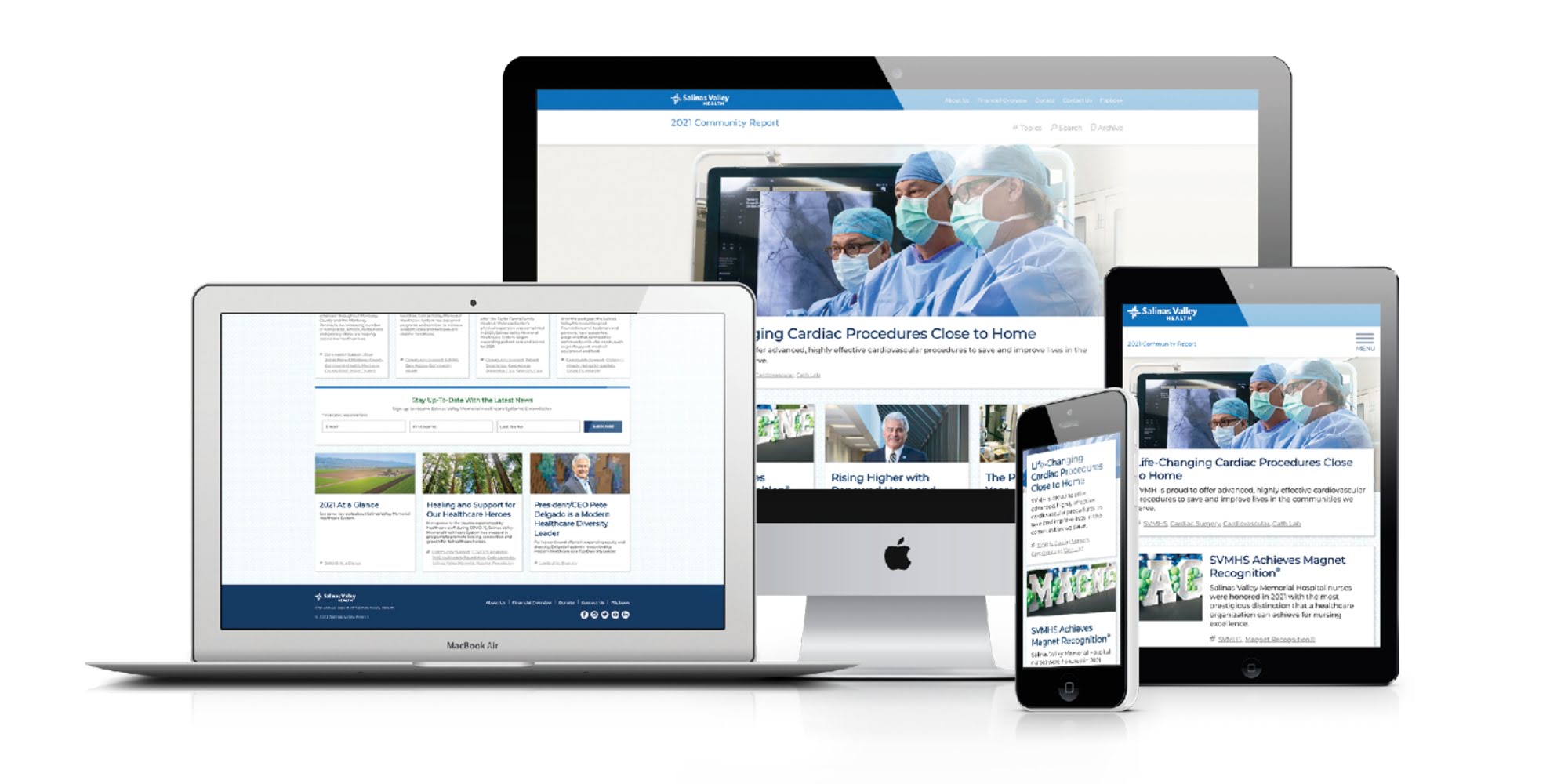Hospital and health system marketers often manage a variety of publications that face their communities, current and potential patients, providers, partners, donors, and grant-providing organizations. Print publications can be costly to create and produce, are inflexible to regular updates, and fail to align with the green initiatives many health systems support. Digital publishing overcomes many of these challenges and is the logical next step in the electronic evolution that hospitals and health systems have already embraced with electronic medical records, online scheduling, and digital health solutions.
That doesn’t mean you have to forsake print pieces altogether: Combining digital and print formats can be a successful way to engage varied audiences. The benefits, however, to transitioning at least some of your magazines, newsletters, and community reports to a digital format are clear.
1. INSTANT REACH
Internet-savvy audiences can access your content instantly wherever they are, so your inspiring achievements in improving patient outcomes and access, innovative research, thought leadership, social advocacy, and life-changing impacts on individuals will be available to a wider range of readers than ever before. Making your publications mobile-friendly is a must, as more people are consuming content on their smartphones and tablets.
2. VIBRANT VISUALS
A picture is worth a thousand words. In a digital publication, you can not only pair your stories and data with beautiful photos, but you can also add video clips, virtual tours, technology demonstrations, and informative animations.
3. AUDIENCE PARTICIPATION
Easy shareability and integration with your social channels means your audiences can share your content with others and be part of important conversations that could be integral to your health system’s long-term success. Interactive calls to action allow readers to instantly take your desired next steps: scheduling an appointment, donating to your system, or reading more about your research.
4. IMPACTFUL INSIGHTS
With digital publications, you have access to analytics that print publications could never provide. Now you can see who is looking at your content and how they are engaging with it so you can tailor your communications to reach the people whose readership and subsequent reactions you value most.
5. LOWER COSTS
Moving your publications to digital formats means no more printing, paper, or shipping costs. The cost to the environment will be a lot lower, too, since no forests will be sacrificed to produce digital formats of frequent newsletters and reports.
6. EASY EDITS
Do you need to update or amend an article? Has a former patient had another amazing achievement? Want to add some exceptional new data to an existing digital spread? You can do so instantly with a digital format for your publications.
7. SAVEABLE AND SEARCHABLE
You can easily archive your digitized works to keep previous publications quickly accessible and searchable. Your readers will thank you for it, as finding the article they need will likely only take moments, versus the time they would previously spend sifting through paper copies.
PREPARE FOR NEW CHALLENGES AND STAY TRUE TO YOUR MISSION
Moving to digital formats may present some new challenges for your team, but they are easily overcome by researching reliable digital publishing platforms, working with experienced digital content creators and designers, upholding your existing editorial standards, and making sure you’re appropriately trained in engagement strategies and SEO. Above all, stay true to the mission you’ve already established in your print publication – to share well-rounded, informative, and accurate content that engages your audience and positions you as a trusted resource in your community.
If you’re feeling overwhelmed with the move to digital publications or you’re just not sure where to start, LIGHTSTREAM is here to help. Contact us today to learn how we can extend your reach and engagement with readers.

